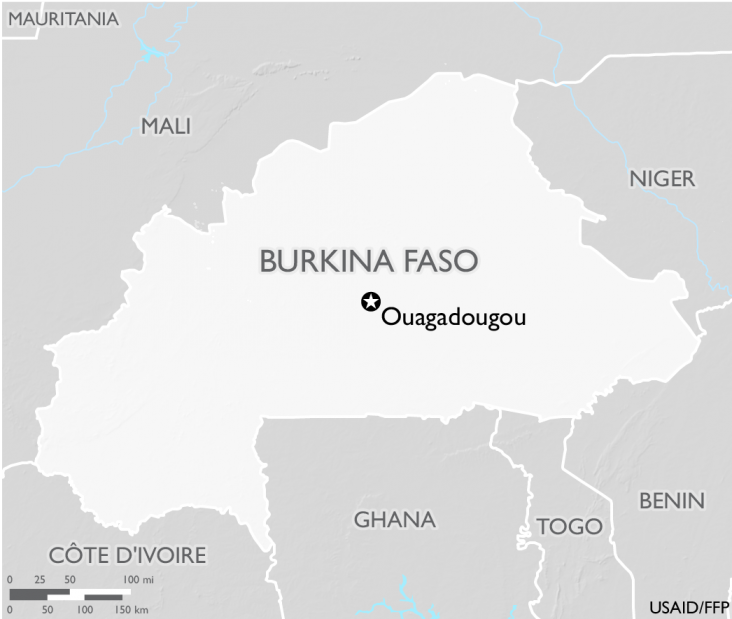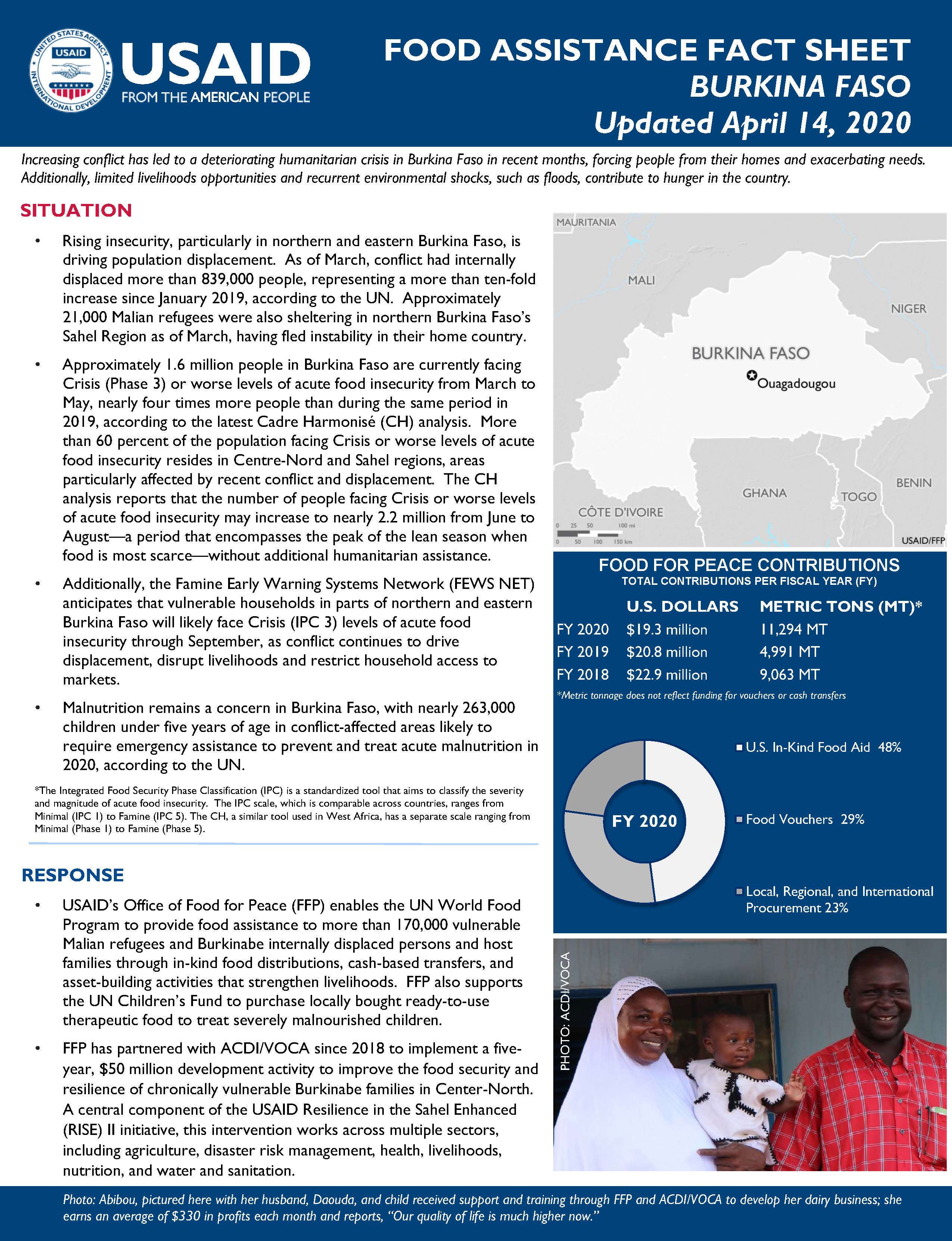Home » What We Do » Agriculture and Food Security » Food Assistance » Where We Work » Food Assistance Fact Sheet - Burkina Faso
- What We Do
- Agriculture and Food Security
- Democracy, Human Rights and Governance
- Economic Growth and Trade
- Education
- Environment and Global Climate Change
- Gender Equality and Women's Empowerment
- Global Health
- Humanitarian Assistance
- Transformation at USAID
- Water and Sanitation
- Working in Crises and Conflict
- U.S. Global Development Lab
Speeches Shim

April 14, 2020
Increasing conflict has led to a deteriorating humanitarian crisis in Burkina Faso in recent months, forcing people from their homes and exacerbating needs. Additionally, limited livelihoods opportunities and recurrent environmental shocks, such as floods, contribute to hunger in the country.
Situation
- Rising insecurity, particularly in northern and eastern Burkina Faso, is driving population displacement. As of March, conflict had internally displaced more than 839,000 people, representing a more than ten-fold increase since January 2019, according to the UN. Approximately 21,000 Malian refugees were also sheltering in northern Burkina Faso’s Sahel Region as of March, having fled instability in their home country.
- Approximately 1.6 million people in Burkina Faso are currently facing Crisis (Phase 3) or worse levels of acute food insecurity from March to May, nearly four times more people than during the same period in 2019, according to the latest Cadre Harmonisé (CH) analysis. More than 60 percent of the population facing Crisis or worse levels of acute food insecurity resides in Centre-Nord and Sahel regions, areas particularly affected by recent conflict and displacement. The CH analysis reports that the number of people facing Crisis or worse levels of acute food insecurity may increase to nearly 2.2 million from June to August—a period that encompasses the peak of the lean season when food is most scarce—without additional humanitarian assistance.
- Additionally, the Famine Early Warning Systems Network (FEWS NET) anticipates that vulnerable households in parts of northern and eastern Burkina Faso will likely face Crisis (IPC 3) levels of acute food insecurity through September, as conflict continues to drive displacement, disrupt livelihoods and restrict household access to markets.
- Malnutrition remains a concern in Burkina Faso, with nearly 263,000 children under five years of age in conflict-affected areas likely to require emergency assistance to prevent and treat acute malnutrition in 2020, according to the UN.
Food Assistance Fact Sheet - Burkina Faso ![]() (pdf - 243k)
(pdf - 243k)
* The Integrated Food Security Phase Classification (IPC) is a standardized tool that aims to classify the severity and magnitude of acute food insecurity. The IPC scale, which is comparable across countries, ranges from Minimal (IPC 1) to Famine (IPC 5). The CH, a similar tool used in West Africa, has a separate scale ranging from Minimal (Phase 1) to Famine (Phase 5).
Response
- USAID’s Office of Food for Peace (FFP) enables the UN World Food Program to provide food assistance to more than 170,000 vulnerable Malian refugees and Burkinabe internally displaced persons and host families through in-kind food distributions, cash-based transfers, and asset-building activities that strengthen livelihoods. FFP also supports the UN Children’s Fund to purchase locally bought ready-to-use therapeutic food to treat severely malnourished children.
- FFP has partnered with ACDI/VOCA since 2018 to implement a five-year, $50 million development activity to improve the food security and resilience of chronically vulnerable Burkinabe families in Center-North. A central component of the USAID Resilience in the Sahel Enhanced (RISE) II initiative, this intervention works across multiple sectors, including agriculture, disaster risk management, health, livelihoods, nutrition, and water and sanitation.
Food for Peace Contributions
Total Contributions:
| U.S. Dollars | Metric Tons | |
|---|---|---|
| Fiscal Year 2020 | $19.3 million | 11,294 MT |
| Fiscal Year 2019 | $20.8 million | 4,991 MT |
| Fiscal Year 2018 | $22.9 million | 9,063 MT |
* Metric tonnage does not reflect funding for vouchers or cash transfers.


Comment
Make a general inquiry or suggest an improvement.